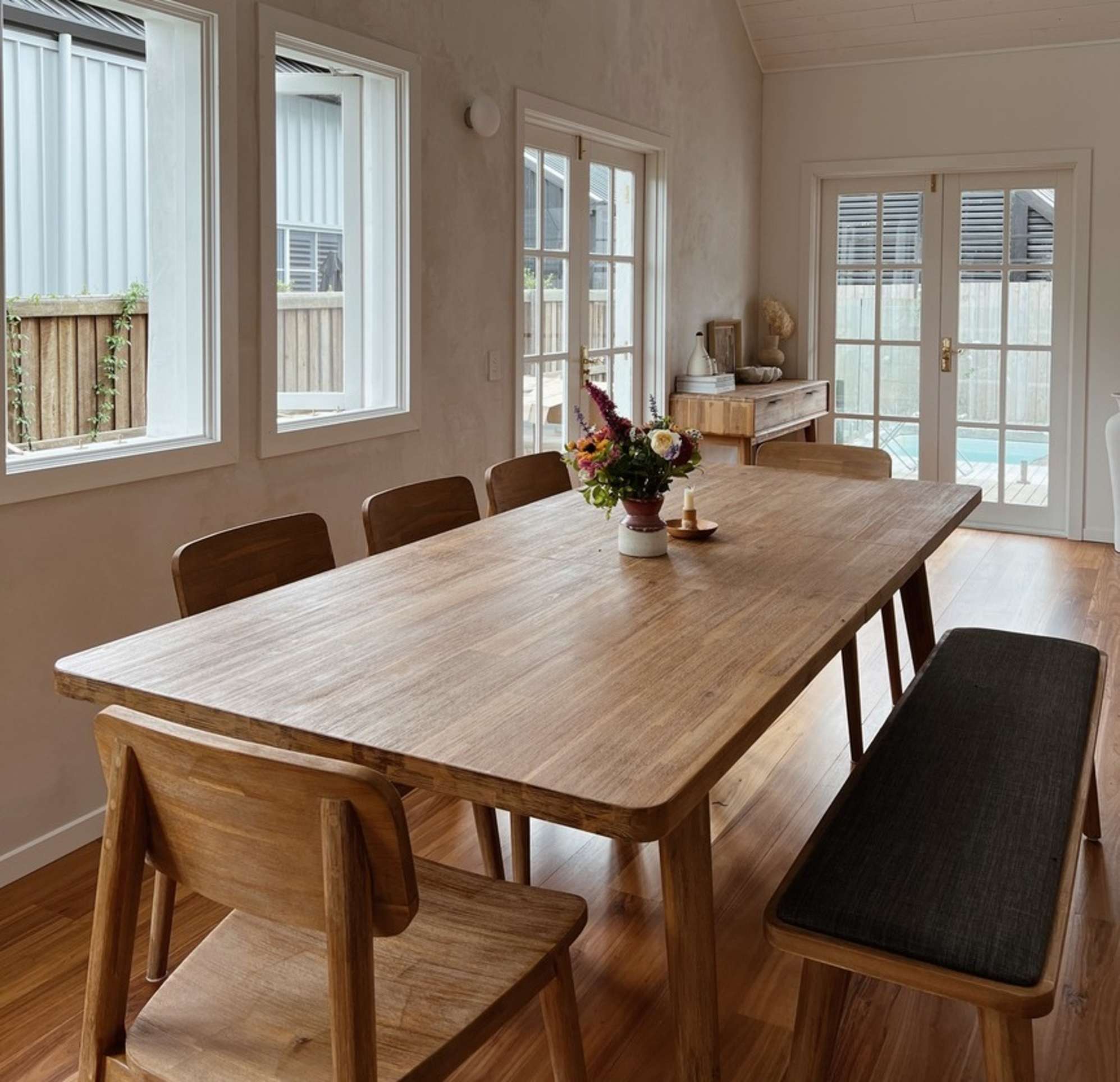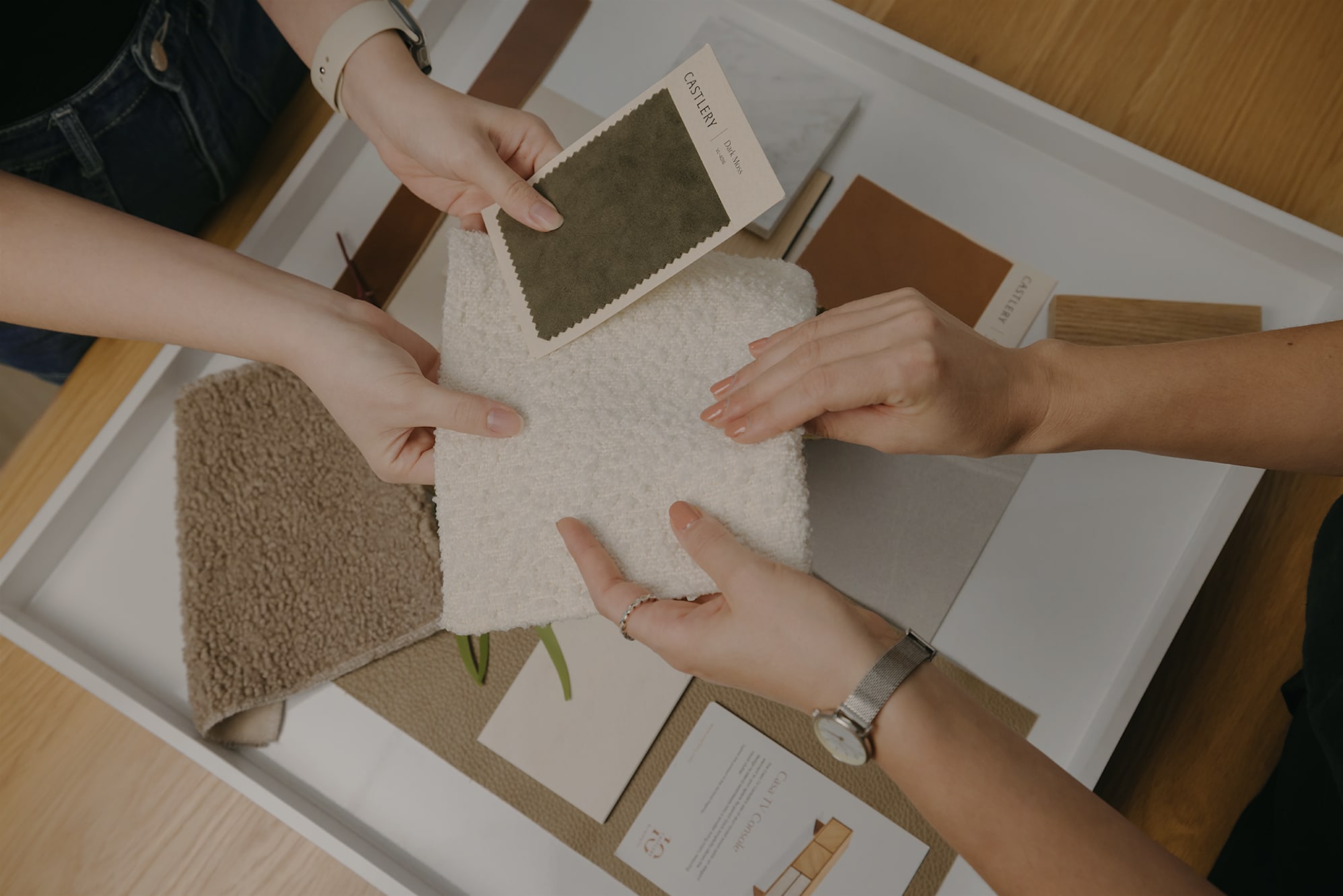
Designing a Japandi Living Room That Feels Lived In
I’ve styled enough Japandi homes to know the secret no one posts on Instagram: real houses come with life. With keys tossed on the table, books left open on the sofa, and that one mug we swear we’ll wash later.
Yet the images we scroll through show impossibly perfect spaces, as if nobody ever inhales too deeply, let alone lives in them.
Here’s the truth: You don’t need to choose between the quiet sophistication of Japanese minimalism and the warmth of Scandinavian comfort. Japandi interior design was made for real life. The kind filled with people, weekend messes, occasional chaos—and, yes, beautiful furniture that can survive it.
I live for that balance. So instead of giving you a showroom checklist, let’s design a Japandi living room or bedroom that actually feels lived in.
What is Japandi interior design?
Japan and Scandinavia may sit on opposite sides of the world, but their philosophies speak the same quiet language. One honors simplicity through imperfection, and the other celebrates comfort through restraint.
When these worlds meet, we get Japandi style: A home that feels grounded, thoughtful, and genuinely used.
As I often tell homeowners, “Japandi takes two cultures that value intentionality and turns it into a space that feels soothing and practical at the same time.”
The philosophies behind the Japandi interior design style
| Where it’s from | The philosophy | What it feels like | How it shows up in your home |
|---|---|---|---|
| Japan | Wabi-Sabi | Beauty in the imperfect or aged | The uneven rim of a handmade bowl, visible wood grain, or fabrics that soften with time |
| Shinrin-Yoku | Calm through nature | Bringing the outdoors in with lots of natural materials, windows to allow natural light, organic shapes, and carefully chosen houseplants | |
| Scandinavia | Hygge | Deep, emotional comfort | Soft throw blankets you want to live in, warm and diffused lighting, and spaces designed for unwinding |
| Lagom | Perfectly balanced, as all things should be | Beautiful furniture that's highly functional, no excess, and keeping the room serene and orderly |
Together, they become a home that looks composed yet never precious. A Japandi living room shouldn’t intimidate its own sofa. It should invite you to take a nap on it.
How to design a lived-in Japandi living room
1. Choose furniture that earns its place
I design every room with one principle: furniture should pull its own weight. Always consider what part each piece of furniture is playing in the space. Every item in a Japandi room should have a purpose beyond looking good.
This is where Japandi furniture shines. A coffee table with hidden compartments to house remote controls and chargers. A sofa bed that hosts a guest when needed. Nesting tables that appear when you need more surfaces and disappear when you don’t. A sideboard with deep drawers that makes clutter vanish, and you get that signature calm without policing belongings.
The Hugg Nesting Rectangular Coffee Table
Picture credits: @homewithtohs
The Hugg Nesting Rectangular Coffee Table
Picture credits: @homewithtohs

The Vincent Nesting Coffee Table Set, Oak
Picture credits: @camillelenore
The Vincent Nesting Coffee Table Set, Oak
Picture credits: @camillelenore

2. Bring in wood, and lots of it
If Japandi had a scent, it would smell like freshly sanded wood. Woods are a must in the Japandi design style, and I never compromise here.
Oak, maple, walnut, bamboo—layer them. Mix light and dark tones the way nature does. A medium-toned wooden dining table, a pale oak TV stand, a darker walnut bookshelf. Harmony, not uniformity.
Think tactile, not shiny; honest, not lacquered to perfection. Wood grounds the space and keeps even the most minimalist room from feeling cold.
The Seb Extendable Dining Table Set
Picture credits: @little.winnie
The Seb Extendable Dining Table Set
Picture credits: @little.winnie

The Bradley Sideboard
Picture credits: @hugsandmesses
The Bradley Sideboard
Picture credits: @hugsandmesses

3. Stay neutral, but let it breathe
A Japandi palette isn’t beige for beige’s sake. It’s the color of exhale. Start with earthy neutrals like mushroom, oat, ash grey, sand brown, then add depth with texture. Bouclé, linen, cotton, raw ceramics, ribbed glass, matte metal.
I often tell clients that neutrals shouldn’t be quiet; they should whisper confidently. If you love color, use it sparingly. Add muted moss greens, charcoal brown, and deep maroons, but just enough to keep the room alive without crowding it.
4. Embrace minimalism that isn’t strict
Minimalism shouldn’t feel like a diet. If you have belongings you love, keep them; just display them intentionally. Choose pieces with clean lines and organic shapes, but don’t fear personality.
When clutter is unavoidable, we find other ways. Woven baskets, storage side tables, and even folding screens that disguise the reality of life. I call it “faux minimalism.” You don’t declutter your life; you simply hide the chaos like a magician concealing a trick.
5. Bring nature indoors with intention
Beyond wood, the other way to bring nature indoors is with plants—but the goal of Japandi is purposeful accessorizing, not turning your home into a greenhouse.
Choose low-maintenance plants like succulents, bonsai trees, and terrariums to align with the simplicity of Japandi design.
A few carefully chosen plants can breathe life into a room, soften lines, and add a touch of color without creating visual clutter. For those who are mindful of energy flow, you might consider the Feng Shui placement of plants in your living room or bedroom to enhance the feeling of calm in your personal sanctuary.
The Mori Performance Fabric Armless 2 Seater Sofa
Picture credits: @mensweardog
The Mori Performance Fabric Armless 2 Seater Sofa
Picture credits: @mensweardog

The Owen Chaise Sectional Sofa
Picture credits: @heydavina
The Owen Chaise Sectional Sofa
Picture credits: @heydavina

6. Let imperfections be the charm
A perfectly pristine living room can feel like a hotel lobby. So I look for pieces with character. A ceramic vase that shows a maker’s fingerprint. A linen cover that wrinkles slightly. A woven rug with irregular texture.
These aren’t flaws; they’re the human touch. Japandi interior design respects age, patina, and touch. A lived-in look isn’t the enemy. It’s the story.
Bring Japandi home, thoughtfully
Japandi interior design doesn’t ask us to live perfectly. It asks us to live intentionally. Whether you’re shaping a Japandi living room, bedroom, or an entire home, the goal stays the same: Embrace what matters, let go of what doesn’t, and create a space that feels connected—to nature, to craft, and to the way you really live.
Your home shouldn’t look untouched. It should look loved.
Frequently asked questions about Japandi interior design
What are the rules for Japandi interior styles?
Japandi style isn’t governed by strict rules. It’s a design philosophy focused on creating calm, functional, and nature-inspired interiors. To achieve the look, focus on three core principles:
Function first: Choose furniture with a clear purpose, ideally with built-in storage or multi-use features.
Natural materials: Use woods, bamboo, stone, linen, and ceramics to bring warmth and texture into your space.
Intentional simplicity: Avoid unnecessary décor or clutter. Let negative space highlight the shapes and natural beauty of each piece.
These guidelines help create a Japandi bedroom or living room that feels serene, grounded, and lived in without excess.
What are the colours used in the Japandi style?
A Japandi color palette is rooted in warm, neutral, and earthy tones. Typically, designers use hues like soft beige, oatmeal, stone grey, off-white, and sand brown as the foundation. Accent colors are subtle and inspired by nature, such as muted greens, terracotta, deep browns, charcoal, or soft blues. The goal is to build a calming backdrop that supports natural textures and organic materials, creating a harmonious and restful environment.
What is the difference between Scandi (Scandinavian) and Japandi?
Scandinavian and Japandi designs share minimalist values, but they create different atmospheres.
Scandinavian interiors are based on hygge, a concept focused on coziness and comfort. They often feature brighter color palettes with crisp whites and pale woods to create an airy, inviting mood.
Japandi interiors blend Scandinavian comfort with Japanese wabi-sabi, which embraces natural imperfection. The palette tends to be warmer and earthier, mixing light and dark woods, tactile textiles, and handcrafted accents.
In essence, Scandinavian style leans toward cozy simplicity, while Japandi interior design adds depth and grounding elements inspired by nature and craftsmanship.

